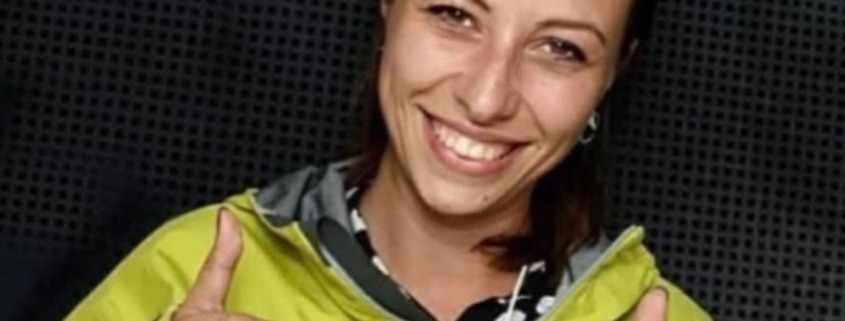“We would go there for a couple of days to check things out. Two, three days.”
This was the plan in September 2015. And so I went. To Salzburg. I actually believed that I would be back in two, maybe three, OK, maximum four days. But before we set off, the cameraman asked me nicely if I was sure that I only wished to take one mini travel bag with me. It wasn’t even a real a travel bag, just a slightly bigger bag. “Sure, we’re only going for three days,” I replied.
And … the photo above was taken shortly before we arrived home. Where I returned ten days later weighing seven kilos less. And not for long, because I soon left for another assignment; this time we only stayed in Salzburg one day and then set off to somewhere else. To the heart of where a humanitarian crisis was about to unfold. To the south.
I really did not imagine the chaos that would ensue. Nobody did. Unfortunately, neither did the people in charge.
I vividly remember the assignment in Tovarnik, a Croatian town right on the border with Serbia. It was terribly hot. And terribly exhausting, although I didn’t realise it at first, because the adrenaline somehow did not allow it. We had breaking news, spread over the whole day, day in, day out. I had to report live – in journalistic jargon you say that you’re on – so, I was on again and again.
Just before one of these live reports, an elderly gentleman came up to me. He started shouting and I didn’t understand. The more I told him that we would talk as soon as I finished the live report that was due in half a minute, the more he shouted back. Not at me. He was shouting at the camera. His daughter and sons were calming him down, I did the report … and then I simply collapsed to the ground. This time the adrenaline didn’t help; all that pressure suddenly caught up with me. Watching tens of thousands of people fleeing war or danger every day, hoping and wishing for a better, safer, brighter future. No, it was not just young men. Among them were very many children and women. But yes, they were not light-skinned. I’ll explain this last sentence later.
To cut a long story short, it took me a while to pull myself together. Even the cameraman left me alone at first, probably a bit shocked, but then came to calm me down. The same people who had previously been calming down their father also came to comfort me – and explained that he was just loudly asking for help. Can you imagine? People with problems beyond our comprehension, who had gone through horrible things, were experiencing uncertainty and agony were comforting ME. I still feel embarrassed when I think of those moments when, in the end, we were all crying and laughing at the same time. But I will never regret that I was there. At that precise time.
“It’s terrible when people who are completely exhausted ask you where to go, how to get there … You don’t know how to help them. It’s horrible.” This was my tweet on 17 September 2015. After a devastated women asked me what she should do. I remember it vividly …
I also vividly remember one evening programme during which the then Minister of the Interior was in the studio in Ljubljana. She was explaining in a confident manner how well prepared Slovenia was, as one of the refugees, responding to my question about where they were heading to, exclaimed: “Slovenia!” This was the first time that somebody mentioned our country (until then, the reply that journalists got had practically always been “Germany!”). And this is when it all started. And nobody was really prepared for everything that happened and continued to happen months later.
The rest is history.
History repeats itself, but with one very important difference: this time, the EU reacted quickly. And it reacted as it should. Finally! We have shown that it can be done. Why wasn’t this the case in 2015?
Because some parties and governments used the developments then to spread hatred. Because “Ukrainian refugees come from a background that is culturally, religiously and historically very different from that of refugees from Afghanistan”. This was the tweet of the current Government of the Republic of Slovenia. Which was later deleted. That it was not a distinction based on “religion, race, colour of skin or eyes”, but a “very necessary distinction between refugees and migrants”, the Prime Minister explained.
Refugees and migrants are not one and the same, I absolutely agree. But please read the deleted tweet again. It says refugees. And then refugees again. Not migrants. Refugees. A very necessary distinction, right? Or racism (and other things)?
As a result of such self-serving spin, manipulation and exploitation of humanitarian disasters, the EU still did not have an adequate mechanism in place in 2015 to deal with migration. Nor is one in place today.
But it would be unfair to say that absolutely nothing has been done over the last six years. In the previous mandate, the European Commission did start to develop a common European model to tackle a migrant humanitarian crisis. I am referring to the European Agenda on Migration, which contains several legislative proposals and reforms of the migration and asylum policy. Unfortunately, not all of the proposed measures have been adopted. Most of the key ones were stalled, blocked. Why?
Before I offer an answer, let me say that also in its current composition, the European Commission has set a common migration and asylum policy as its priority. Nor has the issue been forgotten by the European Parliament, where a number of resolutions were adopted, and I myself have repeatedly and vociferously pointed out the existing shortcomings. Not only in terms of ineffective migration management, but also in terms of inhuman conditions and the brutal treatment of refugees by uniformed service representatives. In September 2020, the European Commission finally presented a Pact on Migration and Asylum. But it has yet to garner consensus. Again: why?
It is not the European Commission that is the main problem. Even less so the European Parliament – and I am really not saying that because I am a member of this institution. The problem is the leaders of some Member States who do not wish to understand the international system of shared responsibility for managing situations extending beyond national borders. The problem is that, more and more often, we are witnessing accelerated expansion of national interests and, above all, of national egoisms. If you ask me, these have no place in the EU.
Will perhaps the proposed legislative package for the EU’s migration policy be adopted at the level of ALL Member States this time? Are we dealing with the right type of refugees this time?
Let us be clear. What is happening in Ukraine is … a crime. It’s monstrous. Inhuman. Disgusting. I fully and unwaveringly support help to Ukrainians. It is the only right thing to do. It is only right that the EU should take in as many refugees as the situation requires. This is our moral and international legal obligation. ALWAYS.
Whichever way someone – a refugee, a migrant, a displaced person – a HUMAN – arrives at the EU’s external border or in the EU … No one has the right to deprive them of their fundamental rights.
Nor do we have the right to forget. Remember the dead Syrian boy on the Turkish coast? Red shirt, blue trousers? Did he drown too far away? Do you then remember the dead ten-year-old Rahima? She drowned in the Dragonja.
Therefore. In this context. The context of humanity:
We. Don’t have. The right. To forget.
We. Don’t have. The right. To moralise.
We. Don’t have. The right. To manipulate.
WE. DON’T HAVE. THE RIGHT. TO DISCRIMINATE.





Leave a Reply
Want to join the discussion?Feel free to contribute!